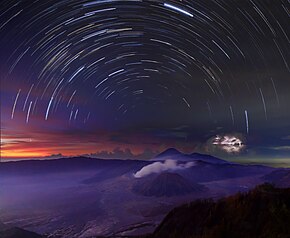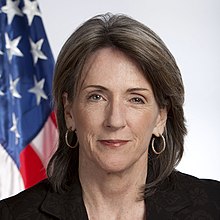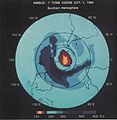Portal:Environment: Difference between revisions
m rw in purge link: "load new batch" |
No edit summary Tags: Reverted Mobile edit Mobile web edit |
||
| Line 68: | Line 68: | ||
|46=Renewable energy in Russia |
|46=Renewable energy in Russia |
||
|47=March for Science Portland |
|47=March for Science Portland |
||
|48=Jevons paradox |
|||
|49=Global Climate Coalition |
|49=Global Climate Coalition |
||
|50=Wind power |
|50=Wind power |
||
| Line 323: | Line 322: | ||
{{/Things you can do}} |
{{/Things you can do}} |
||
{{Box-footer}} |
{{Box-footer}} |
||
| ⚫ | |||
{{/box-header|Related categories}} |
|||
{{/Categories}} |
|||
{{Box-footer}} |
|||
{{/box-header|Related portals|Portal:Environment/Related portals}} |
|||
{{/Related portals}} |
|||
{{Box-footer}} |
|||
{{/box-header|WikiProjects}} |
|||
{{/WikiProjects}} |
|||
{{Box-footer}} |
|||
{{/box-header|Associated Wikimedia}} |
|||
{{Wikimedia for portals | species=no | voy=no}} |
|||
{{Box-footer}} |
|||
{{Portal navbar no header2}} |
|||
</div> |
|||
|} |
|||
__NOTOC__ __NOEDITSECTION__ |
|||
[[Category:Natural environment|*]] |
|||
| ⚫ | |||
[[Category:Portals needing placement of incoming links]] |
|||
[[Category:Environmental science| ]] |
|||
{{featured portal|FPOCyear=2007}} |
|||
[[zh:Portal:环境]] |
|||
Revision as of 00:24, 29 November 2021
Introduction The natural environment or natural world encompasses all biotic and abiotic things occurring naturally, meaning in this case not artificial. The term is most often applied to Earth or some parts of Earth. This environment encompasses the interaction of all living species, climate, weather and natural resources that affect human survival and economic activity. The concept of the natural environment can be distinguished as components:
In contrast to the natural environment is the built environment. Built environments are where humans have fundamentally transformed landscapes such as urban settings and agricultural land conversion, the natural environment is greatly changed into a simplified human environment. Even acts which seem less extreme, such as building a mud hut or a photovoltaic system in the desert, the modified environment becomes an artificial one. Though many animals build things to provide a better environment for themselves, they are not human, hence beaver dams, and the works of mound-building termites, are thought of as natural. People cannot find absolutely natural environments on Earth, and naturalness usually varies in a continuum, from 100% natural in one extreme to 0% natural in the other. The massive environmental changes of humanity in the Anthropocene have fundamentally effected all natural environments: including from climate change, biodiversity loss and pollution from plastic and other chemicals in the air and water. More precisely, we can consider the different aspects or components of an environment, and see that their degree of naturalness is not uniform. If, for instance, in an agricultural field, the mineralogic composition and the structure of its soil are similar to those of an undisturbed forest soil, but the structure is quite different. (Full article...)  The natural environment or natural world encompasses all biotic and abiotic things occurring naturally, meaning in this case not artificial. The term is most often applied to Earth or some parts of Earth. This environment encompasses the interaction of all living species, climate, weather and natural resources that affect human survival and economic activity. The concept of the natural environment can be distinguished as components:
In contrast to the natural environment is the built environment. Built environments are where humans have fundamentally transformed landscapes such as urban settings and agricultural land conversion, the natural environment is greatly changed into a simplified human environment. Even acts which seem less extreme, such as building a mud hut or a photovoltaic system in the desert, the modified environment becomes an artificial one. Though many animals build things to provide a better environment for themselves, they are not human, hence beaver dams, and the works of mound-building termites, are thought of as natural. People cannot find absolutely natural environments on Earth, and naturalness usually varies in a continuum, from 100% natural in one extreme to 0% natural in the other. The massive environmental changes of humanity in the Anthropocene have fundamentally effected all natural environments: including from climate change, biodiversity loss and pollution from plastic and other chemicals in the air and water. More precisely, we can consider the different aspects or components of an environment, and see that their degree of naturalness is not uniform. If, for instance, in an agricultural field, the mineralogic composition and the structure of its soil are similar to those of an undisturbed forest soil, but the structure is quite different. (Full article...) Selected article - Nature is an inherent character or constitution, particularly of the ecosphere or the universe as a whole. In this general sense nature refers to the laws, elements and phenomena of the physical world, including life. Although humans are part of nature, human activity or humans as a whole are often described as at times at odds, or outright separate and even superior to nature. During the advent of modern scientific method in the last several centuries, nature became the passive reality, organized and moved by divine laws. With the Industrial revolution, nature increasingly became seen as the part of reality deprived from intentional intervention: it was hence considered as sacred by some traditions (Rousseau, American transcendentalism) or a mere decorum for divine providence or human history (Hegel, Marx). However, a vitalist vision of nature, closer to the pre-Socratic one, got reborn at the same time, especially after Charles Darwin. (Full article...)Did you know -
Selected image - Ecological footprint analysis measures human demand on nature. It compares human consumption of natural resources with planet Earth's ecological capacity to regenerate them. It is an estimate of the amount of biologically productive land and sea area needed to regenerate the resources a human population consumes and to absorb the corresponding waste, given prevailing technology. Using this assessment, it is possible to estimate how many planet Earth's it would take to support humanity if everybody lived a given lifestyle. While the measure is widely used, some also criticize the approach. In 2003, the average biologically productive area per person worldwide was approximately 1.8 global hectares (gha) per capita. The US footprint per capita was 9.6 gha, and that of Switzerland was 5.1 gha per person, whilst China's was 1.6 gha per person. The WWF claims that the human footprint has exceeded the biocapacity (the available supply of natural resources) of the planet by 25%. Current events
Selected biography -Carol Martha Browner (born December 16, 1955) is an American lawyer, environmentalist, and businesswoman, who served as director of the White House Office of Energy and Climate Change Policy in the Obama administration from 2009 to 2011. Browner previously served as Administrator of the Environmental Protection Agency (EPA) during the Clinton administration from 1993 to 2001. She currently works as a Senior Counselor at Albright Stonebridge Group, a global business strategy firm. Browner grew up in Florida and graduated from the University of Florida and the University of Florida College of Law. After working for the Florida House of Representatives, she was employed by Citizen Action in Washington, D.C. She became a legislative assistant for Senators Lawton Chiles and Al Gore. Browner then headed the Florida Department of Environmental Regulation from 1991 to 1993, where she turned it into one of the most active departments in the state government. (Full article...)Selected organization - The Intergovernmental Panel on Climate Change (IPCC) is an intergovernmental body of the United Nations. Its job is to advance scientific knowledge about climate change caused by human activities. The World Meteorological Organization (WMO) and the United Nations Environment Programme (UNEP) set up the IPCC in 1988. The United Nations endorsed the creation of the IPCC later that year. It has a secretariat in Geneva, Switzerland, hosted by the WMO. It has 195 member states who govern the IPCC. The member states elect a bureau of scientists to serve through an assessment cycle. A cycle is usually six to seven years. The bureau selects experts in their fields to prepare IPCC reports. There is a formal nomination process by governments and observer organizations to find these experts. The IPCC has three working groups and a task force, which carry out its scientific work. The IPCC informs governments about the state of knowledge of climate change. It does this by examining all the relevant scientific literature on the subject. This includes the natural, economic and social impacts and risks. It also covers possible response options. The IPCC does not conduct its own original research. It aims to be objective and comprehensive. Thousands of scientists and other experts volunteer to review the publications. They compile key findings into "Assessment Reports" for policymakers and the general public; Experts have described this work as the biggest peer review process in the scientific community. (Full article...)General images -The following are images from various environment-related articles on Wikipedia.
Selected quote -Main topicsRelated articlesThings you can do
|













































